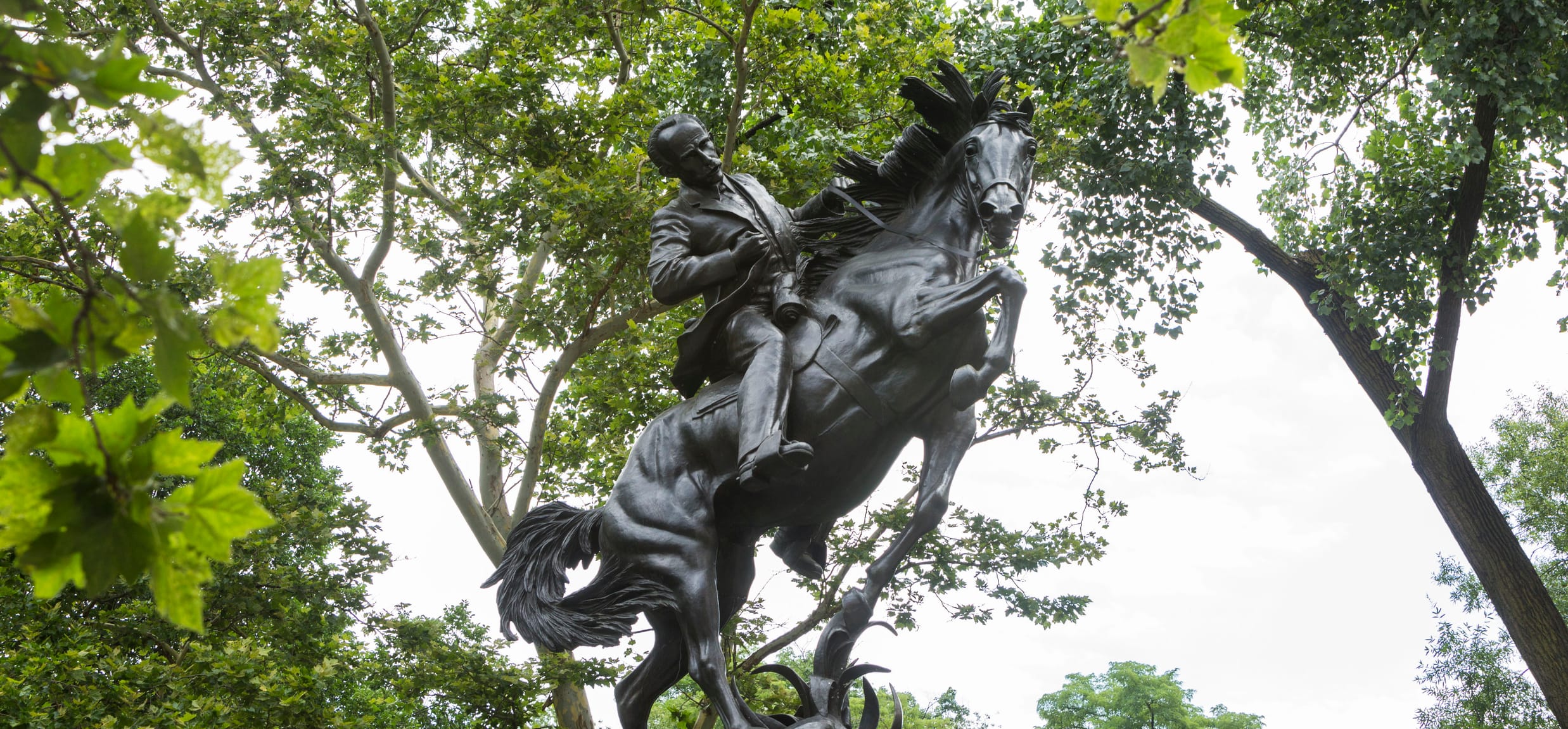José Julián Martí

Standing atop a 19-foot-tall pedestal, the equestrian monument to the Cuban patriot José Martí (1853–1895) depicts the moment when he was mortally wounded in a battle against the Spanish royalist army.
Martí is one of three equestrian monuments to Latin American heroes located at the Avenue of the Americas entrance to Central Park, which was established as a plaza to South American heroes in 1945 when Sixth Avenue was renamed. The American sculptor Anna Hyatt Huntington created the monument to Martí in 1959 when she was 81 years old. Driven by personal interest and enabled by her financial independence, she gifted the monument to the Cuban government for presentation to the people of New York City.
Martí was the last monument added to the plaza; both Simón Bolívar and José de San Martín were installed in 1951. Although completed in 1959, Martí was not installed until 1965. For more than five years, during a period of high political tension between the United States and Fidel Castro’s Cuba, the pedestal for the sculpture stood empty.
Huntington specialized in large equestrian sculptures, and created other significant public sculptures in New York, including Joan of Arc in Riverside Park and El Cid at Audubon Terrace.
In 2015, following the reestablishment of diplomatic relations between Cuba and the United States, the Bronx Museum of the Arts initiated a project to cast a second copy of Huntington’s Martí. It was installed in the plaza of the Museo de la Revolución in Havana in 2018.

Support the Park
Become an honorary preservationist and help the Conservancy continue to restore historic structures and landscapes throughout Central Park. Your generous support allows us to carry out essential work so that the Park remains a source of beauty, comfort, and inspiration for all.

